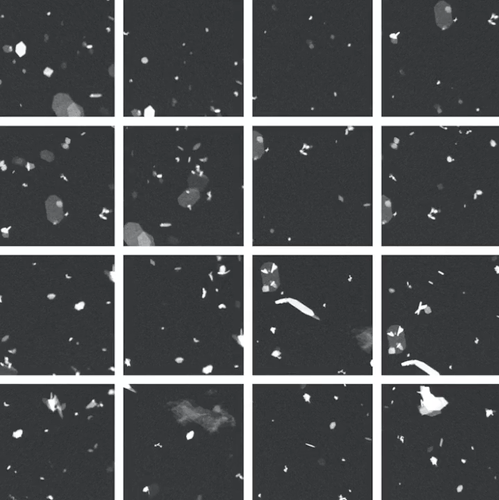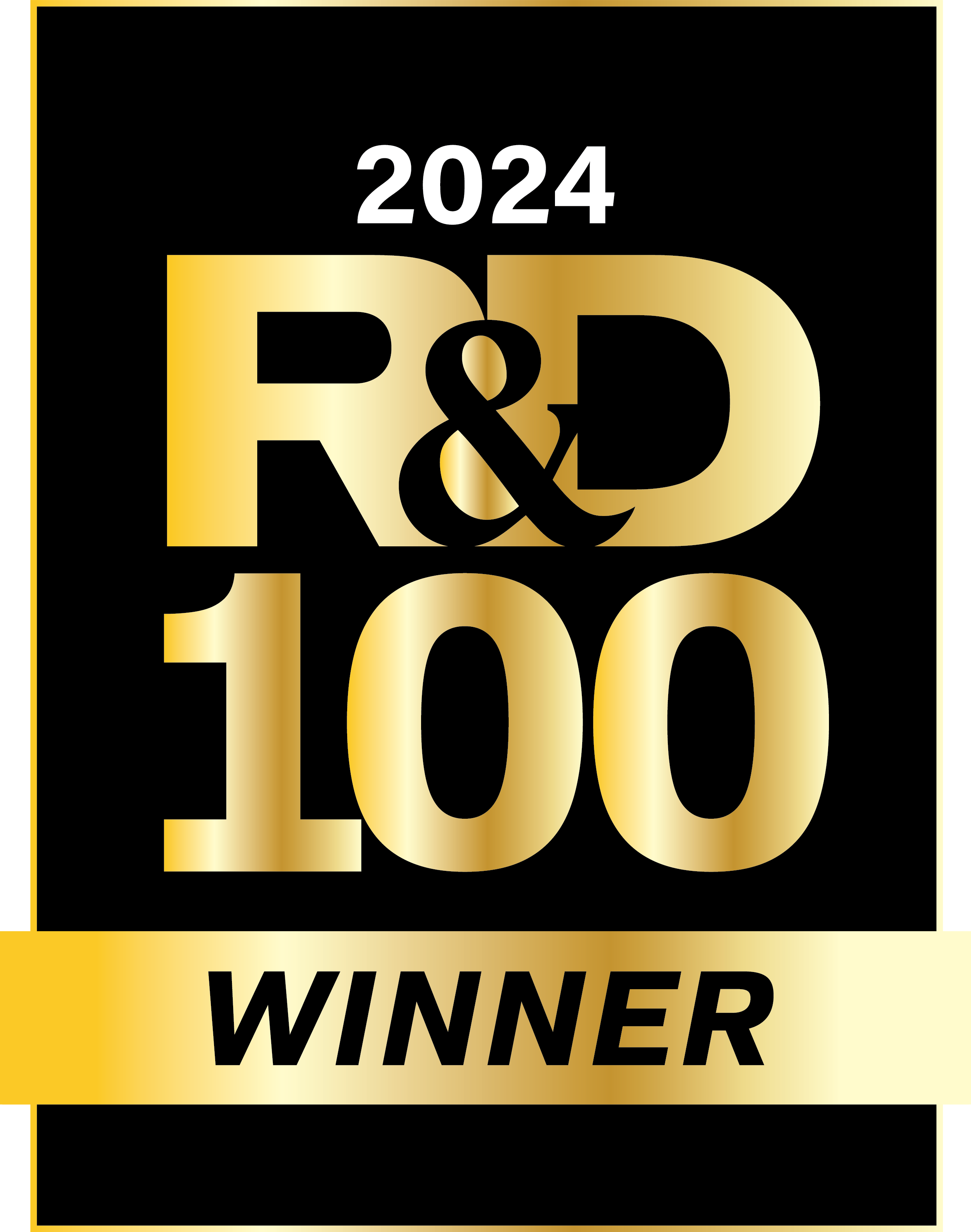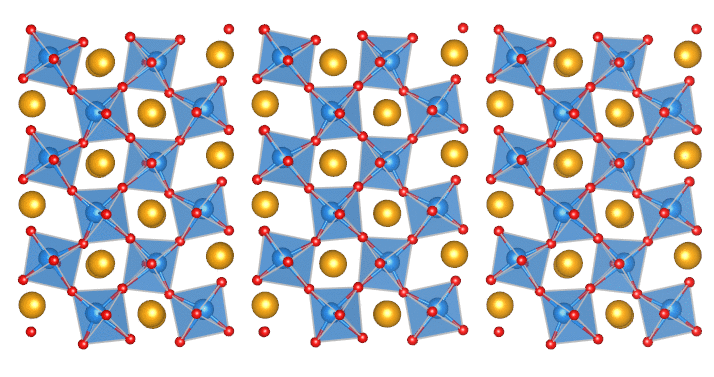Research Interests
Our research group is interested in the evolution of structure-property relationships in nanomaterials, including functional oxides, semiconductors, thin films, and nanoparticles, particularly in extreme environments. These systems are fascinating because of their exotic physics and importance for quantum computing, energy storage, and catalytic technologies. Our work stands at the intersection of atomically-precise synthesis, data-driven electron microscopy, and atomistic modeling, which together guide the discovery and design of nanostructured systems. We are particularly concerned with the development of artificial intelligence, machine learning, and automation to help us master complex materials processes.
Advancing Autonomous Science
Cutting-edge scientific instrumentation is the foundation for breakthrough advances in energy storage, quantum computing, biomedicine, and more. Traditional supervised modes of data analysis and decision-making can no longer keep pace with hardware advances, limiting our ability to apply these tools to the study of critical processes in physical and biological systems. This challenge is especially pronounced in the materials and chemical sciences, where rapid, multimodal data is generated in the discovery and design of atomistic systems. Artificial intelligence (AI) methods show promise to accelerate this process by enabling richer, faster, and more informed decision-making, but their adoption has been slow and uneven.
We are now data-rich but faced with an increasingly difficult annotation task that leaves us knowledge-poor. There is presently a transformative opportunity to leverage AI and emerging sparse data analytics to accelerate scientific discovery in high-volume electron microscopy data, laying the groundwork for a new approach to autonomous experimentation. We are on the forefront of these methods, which enable us to intelligently classify and act on data. These approaches are helping us reimagine how materials and chemical systems are designed and characterized.
Related Publications
Kalinin, S.V., Mukherjee, D., Roccapriore, K., Blaiszik, B., Ghosh, A., Ziatdinov, M., Al-Najjar, N., Doty, C.M., Akers, S.M., Rao, N.S., Agar, J. and S.R. Spurgeon. “Machine learning for automated experimentation in scanning transmission electron microscopy.” npj Computational Materials. (2023). DOI:10.1038/s41524-023-01142-0 [Download PDF]
Lewis, N., Jin, Y., Tang, X., Shah, V., Doty, C., Matthews, B.E., Akers, S. and S.R. Spurgeon. “Forecasting of in situ electron energy loss spectroscopy.” npj Computational Materials. 8 (2022): 252. DOI:10.1038/s41524-022-00940-2 [Download PDF]
Doty, C., Gallagher, S., Cui, W., Chen, W., Bhushan, S., Oostrom, M., Akers, S., and S.R. Spurgeon. “Design of a graphical user interface for few-shot machine learning-based classification of electron microscopy data.” Computational Materials Science. 203.15 (2022): 111121. DOI:10.1016/j.commatsci.2021.111121 [Download PDF]
Akers, S., Kautz, E., Trevino-Gavito, A., Olszta, M., Matthews, B., Wang, L., Du, Y., and S.R. Spurgeon. “Rapid and flexible segmentation of electron microscopy data using few-shot machine learning.“ npj Computational Materials. 7 (2021): 187. DOI:10.1038/s41524-021-00652-z [Download PDF]
Spurgeon, S.R., Ophus, C., Jones, L., Petford-Long, A., Kalinin, S.V., Olszta, M.J., Dunin-Borkowski, R., Salmon, N., Hattar, K., Yang, W-C.D., Sharma, R., Du, Y., Chiaramonti, A., Zheng, H., Buck, E.C., Kovarik, L., Penn, R.L., Li, D., Zhang, X., Murayama, M., and M.L. Taheri. “Towards data-driven next-generation transmission electron microscopy.” Nature Materials. 20 (2021): 274–279. DOI:10.1038/s41563-020-00833-z [Download PDF]
Autonomous microscopy guided by sparse data analytics can unlock transformative new understanding of materials and chemical systems.
Few-shot machine learning can classify electron microscope data from limited prior knowledge for automated decision-making.
AutoEM is the winner of 2024 R&D 100 Award, known as the “Oscars of Innovation.”
Functional Materials in Extreme Environments
Defects, defined as deviations from ideality, are central to determining the functionality of materials systems. Complex oxides and semiconductors are particularly powerful defect-defined materials systems because of their strong couplings among charge, spin, lattice, and orbital degrees of freedom. However, the tremendous potential they represent for both discovering new physics and driving transformative advances has not been realized due to an inability to predict and control defect creation and evolution in extreme environments. The development of functional materials with tailored properties thus requires new insight into defect formation pathways in highly non-equilibrium conditions.
We have been exploring the dynamics of order-disorder behavior at complex oxide interfaces for energy applications, such as solid oxide fuel cells, as well as the extreme, high-radiation environments of spacecraft and nuclear reactors. While bulk oxides have been widely studied, behavior at interfaces is poorly understood. Our studies of irradiated model systems such as La2Ti2O7 / SrTiO3 have shown that the unique configuration of oxide interfaces can drastically affect order-disorder processes. In particular, both oxygen defect formation and lattice octahedral rotations dictate the sequence of disorder in these systems. Using high-resolution analytical STEM, closely coupled to density functional and molecular dynamics, we can distill salient structural parameters and offer guidance to control defect formation pathways.
Related Publications
Ter-Petrosyan, A.H., Bilbrey, J.A., Doty, C.M., Matthews, B.E., Wang, L., Du, Y., Lang, E., Hattar, K., and S.R. Spurgeon. “Unsupervised segmentation of irradiation‐induced order‐disorder phase transitions in electron microscopy.” Proceedings of Thirty-Seventh Conference on Neural Information Processing Systems (NeurIPS). (2023). DOI:10.48550/arXiv.2311.08585 [Download PDF]
Matthews, B., Sassi, M., Barr, C., Ophus, C., Kaspar, T., Jiang, W., Hattar, K., and S.R. Spurgeon. “Percolation of ion-irradiation-induced disorder in complex oxide interfaces.” Nano Letters. 21.12 (2021): 5353–5359. DOI:10.1021/acs.nanolett.1c01651 [Download PDF]
S.R. Spurgeon. “Order-disorder behavior at thin film oxide interfaces.” Current Opinion in Solid State & Materials Science. 24.6 (2020): 100870. DOI:10.1016/j.cossms.2020.100870 [Download PDF]
Spurgeon, S.R., Kaspar, T.C., Shutthanandan, V., Gigax, J., Shao, L., and M. Sassi. “Asymmetric lattice disorder induced at oxide interfaces.” Advanced Materials Interfaces. 7 (2020): 1901944. DOI:10.1002/admi.201901944 [Download PDF]
Spurgeon, S.R., Sassi, M., Ophus, C., Stubbs, J.E., Ilton, E.S., and E.C. Buck. “Nanoscale oxygen defect gradients in UO2+x surfaces.” Proceedings of the National Academy of Sciences. 116.35 (2019): 17181–17186. DOI:10.1073/pnas.1905056116 [Download PDF]
A unique percolation of disorder propagates through oxide interfaces during in situ ion irradiation.
Octahedral rotations mediate radiation damage in pyrochlore oxides.
Materials Synthesis Pathways
Many of today's most important materials possess multiple degrees of order spanning the atomic- to macroscale. How can we understand and control this order to achieve desired properties? While traditional indirect probes can provide detailed volume-averaged information about a sample, direct local analyses are increasingly needed to understand the hierarchy of emergence of order during nonequilibrium synthesis processes.
By combining analytical scanning transmission electron microscopy (STEM) with atom probe tomography (APT), we are able to visualize the real space structure and chemistry of these materials in three dimensions. This unprecedented level of understanding can greatly inform the design of compounds such as double perovskites, which show promise for use in thermoelectrics and spintronics.
Electron spectroscopy mapping provides direct insight into the cation ordering process in these compounds, while APT has revealed a previously unknown nanoscale phase separation in this system. Ab initio calculations show that double perovskites possess several competing energetic pathways as a result of the low oxygen growth pressure used in their synthesis. Taken together our results illustrate the powerful way that microscopy can inform theory and structure-property models.
Related Publications
Taylor, S.D., Yano, K.H., Sassi, M., Matthews, B.E., Kautz, E.J., Lambeets, S.V., Neumann, S., Schreiber, D.K., Wang, L., Du, Y. and S.R. Spurgeon. “Resolving diverse oxygen transport pathways across La1−xSrxFeO3 and metal-perovskite heterostructures.” Advanced Materials Interfaces. (2022). DOI:10.1002/admi.202202276 [Download PDF]
Yoon, H., Truttman, T., Liu, F., Matthews, B.E., Su, Q., Saraswat, V., Manzo, S., Arnold, M., Kawasaki, J., Koester, S., Spurgeon, S.R., Chambers, S.A., and B. Jalan. “Free-standing epitaxial SrTiO3 nanomembranes via hybrid molecular beam epitaxy on graphene.” Science Advances. (2022). DOI:10.1126/sciadv.add5328 [Download PDF]
Wang, L., Yang, Z., Bowden, M.E., Freeland, J.W., Sushko, P.V., Spurgeon, S.R., Matthews, B., Samarakoon, W.S., Zhou, H., Feng, Z., Engelhard, M.H., Du, Y., and S.A. Chambers. “Hole-trapping-induced stabilization of Ni4+ in SrNiO3/ LaFeO3 superlattices.” Advanced Materials. 32.45 (2020): 2005003. DOI:10.1002/adma.202005003 [Download PDF]
Spurgeon, S.R., Sushko, P.V., Devaraj, A., Du, Y., Droubay, T., and S.A. Chambers. “Onset of phase separation in the double perovskite oxide La2MnNiO6.” Physical Review B. 97 (2018): 134110. DOI:10.1103/PhysRevB.97.134110 [Download PDF]
Atom probe tomography reconstruction of phase separation in a double perovskite oxide.
Harnessing Emergent Interface Properties
Interfaces of complex oxides and semiconductors give rise to unique crystallographic and defect environments, where exotic states of charge and magnetism can emerge. Research over the past several decades has emphasized the importance of understanding and precisely controlling interfaces to achieve desired functionality. We have developed a rich experimental and theoretical toolset, underpinned by atomically-precise synthesis and characterization, to better harness these materials. From controlling electronic band structure to interfacial conductivity and magnetism, our work has shown the outsize role that even trace amounts of defects can have in these systems. Our results are supporting the development of catalysts, quantum computing systems, and next-generation electronics.
Related Publications
Chrysler, M., Gabel, J., Lee, T.-L., Penn, A., Matthews, B.E., Kepaptsoglou, D., Ramasse, Q., Paudel, J.R., Sah, R.K., Grassi, J.D., Zhu, Z., Gray, A.X., LeBeau, J.M., Spurgeon, S.R., Chambers, S.A., Sushko, P.V., and J.H. Ngai. “Tuning band alignment at a semiconductor-crystalline oxide heterojunction via electrostatic modulation of the interfacial dipole.” Physical Review Materials. 5 (2021): 104603. DOI:10.1103/PhysRevMaterials.5.104603 [Download PDF]
Comes, R.B., Spurgeon, S.R., Kepaptsoglou, D.M., Engelhard, M.H., Perea, D.E., Kaspar, T.C., Ong, P.V., Ramasse, Q.M., Sushko, P.V., and S.A. Chambers. “Probing the origin of interfacial carriers in SrTiO3 – LaCrO3 superlattices.” Chemistry of Materials, 29.3 (2017): 1147–1155. DOI:10.1021/acs.chemmater.6b04329 [Download PDF]
Comes, R.B., Spurgeon, S.R., Heald, S.M., Kepaptsoglou, D.M., Jones, L., Ong, P.V., Bowden, M.E., Ramasse, Q.M., Sushko, P.V., and S.A. Chambers. “Interface-induced polarization in SrTiO3 – LaCrO3 superlattices.” Advanced Materials Interfaces, 3.10 (2016): 1500779. DOI:10.1002/admi.201500779 [Download PDF]
Spurgeon, S.R., Balachandran, P.V., Kepaptsoglou, D.M., Damodaran, A.R., Karthik, J., Nejati, S., Jones, L., Ambaye, H., Lauter, V., Ramasse, Q.M., Lau, K.K.S., Martin, L.W., Rondinelli, J.M., and M.L. Taheri. “Polarization screening-induced magnetic phase gradients at complex oxide interfaces.” Nature Communications, 6 (2015): 6735. DOI:10.1038/ncomms7735 [Download PDF]
Spurgeon, S.R., Sloppy, J.D., Kepaptsoglou, D.M., Balachandran, P.V., Nejati, S., Karthik, J., Damodaran, A.R., Johnson, C.L., Ambaye, H., Goyette, R., Lauter, V., Ramasse, Q.M., Idrobo, J.C., Lau, K.K.S., Lofland, S.E., Rondinelli, J.M., Martin, L.W., and M.L. Taheri. “Thickness-dependent crossover from charge- to strain-mediated magnetoelectric coupling in ferromagnetic / piezoelectric oxide heterostructures.” ACS Nano, 8.1. (2014): 894–903. DOI:10.1021/nn405636c [Download PDF]
Control of semiconductor and oxide interfaces is important for next-generation electronics and quantum computing.






